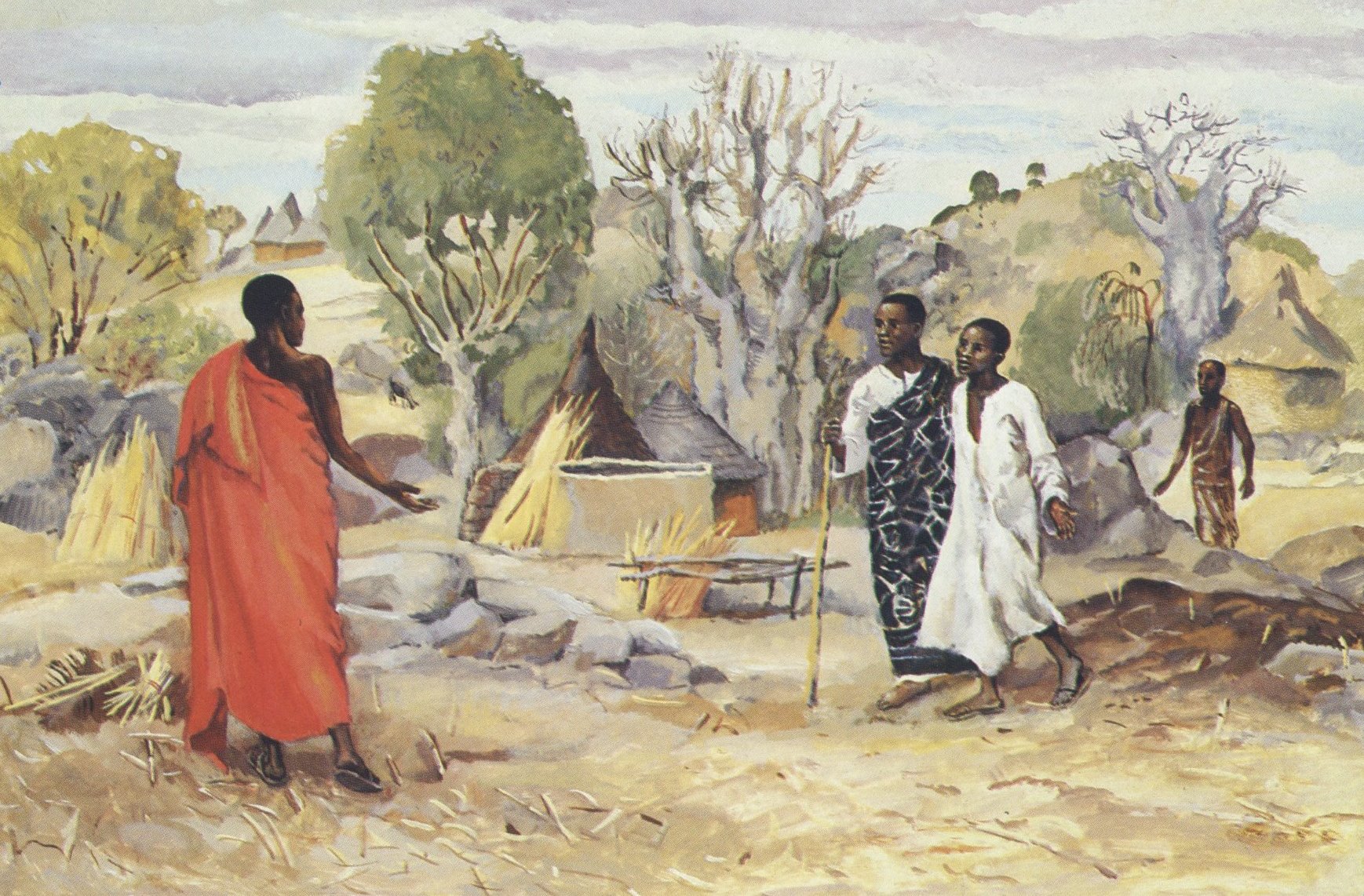“Does ‘Come and see’ always work?”
John 1:43-51
Second Sunday after Epiphany
Analysis by Peter Keyel
43The next day Jesus decided to go to Galilee. He found Philip and said to him, “Follow me.” 44Now Philip was from Bethsaida, the city of Andrew and Peter. 45Philip found Nathanael and said to him, “We have found him about whom Moses in the Law and also the Prophets wrote, Jesus son of Joseph from Nazareth.” 46Nathanael said to him, “Can anything good come out of Nazareth?” Philip said to him, “Come and see.” 47When Jesus saw Nathanael coming toward him, he said of him, “Here is truly an Israelite in whom there is no deceit!” 48Nathanael asked him, “Where did you get to know me?” Jesus answered, “I saw you under the fig tree before Philip called you.” 49Nathanael replied, “Rabbi, you are the Son of God! You are the King of Israel!” 50Jesus answered, “Do you believe because I told you that I saw you under the fig tree? You will see greater things than these.” 51And he said to him, “Very truly, I tell you, you will see heaven opened and the angels of God ascending and descending upon the Son of Man.”

The First Two Disciples – JESUS MAFA from – https://diglib.library.vanderbilt.edu/act-imagelink.pl?RC=48379
“Not only does Jesus have the power to evoke belief that Philip lacks, but even bigger things are going to happen.”
Author’s Note: In some pericopes, the challenge is finding the grace in the story or text. In this one, due to a lack of context (what was Nathanael doing under the fig tree?), the challenge is finding the law. Most “groundings” focus on Nathanael, with his sarcastic comment “Can anything good come out of Nazareth”. Despite the sarcasm, Nathanael does “come and see”, and believes so fast even Jesus is taken aback. If only mission work today were this easy! With these challenges in mind, I will focus instead on Philip, and the parts of this story that glare a bit more for those trying mission-work after Jesus’ resurrection. I should also note that in John’s gospel, Jesus and the Advocate, the Holy Spirit, are mutually related in the work of grace.
DIAGNOSIS: We are not purveyors of God’s grace
Step 1: Initial Diagnosis (External Problem): Witnessing to a wall
Philip did what every good disciple is encouraged to do: he witnessed to his friend, Nathanael. Maybe it’s his elevator pitch… Contrast Philip’s clunky and Law-centric “we have found him about whom Moses in the Law, and also the Prophets wrote” (v. 45) with Andrew’s simple pitch to Simon Peter “We found the Messiah” (v. 41). Regardless of the reason, Nathanael does not buy Philip’s witness. The sarcastic response to Philip’s witness is disappointing.
Step 2: Advanced Diagnosis (Internal Problem): Wanting belief
Philip wanted Nathanael to believe. The pericope does not describe Philip’s disappointment or any other emotions behind his reply, which copies Jesus’ “come and see” (v. 39). Perhaps Philip’s “come and see” comes from patient knowledge of “you’ll be surprised”. Perhaps it is borne out of a desperate attempt to get Nathanael to believe.
One challenge with witness is when we want people to believe, it becomes about us, instead of about them. While Philip could literally bring Nathanael to Jesus and show him Jesus in the flesh, the readers of John’s Gospel cannot. What could Philip have done if Jesus hadn’t been a short walk away?
Step 3: Final Diagnosis (Eternal Problem): Powerless
Just in case we thought it was Philip’s witness that led Nathanael to believe, Jesus removes all doubt. “I saw you under the fig tree before Philip called you” (v. 48). If we believe that it all depends on us, on our work, on our preaching and witness, we miss the Source. Like Philip, our witness becomes irrelevant. Philip failed to evoke Nathanael’s belief in Jesus. Philip failed to evoke belief because he is not the Source of God’s grace.
What use are missionaries who fail at their job? Besides fuel for the fires of Hell?
PROGNOSIS: Jesus gives God’s grace
Step 4: Initial Prognosis (Eternal Solution): Powerful
Jesus is God and foreshadows this to Nathanael and Philip. Not only does Jesus have the power to evoke belief that Philip lacks, but even bigger things are going to happen. Jesus closing statement for the chapter that they “will see heaven opened and angels ascending and descending on the Son of Man” (v. 51) sounds glorious. And this will happen at his Transfiguration.
It will also happen at Golgotha. The Angel of Death will descend on the Son of Man as Jesus dies on the cross. Most will sneer at a powerless Jesus on the cross instead of coming to instant belief. The disciples whose belief seems strong now are scattered and hiding.
But Jesus has God’s grace, and He is even more powerful than death itself. In the resurrection, Jesus reveals the true power and glory of God. That power is forgiveness for failures.
Step 5: Advanced Prognosis (Internal Solution): Having belief
We see what having belief looks like: “Rabbi, you are the Son of God! You are the king of Israel!” (v. 49) Jesus, not us, is the one who creates the needed faith. Having faith is dependent directly on God’s choices, not on us.
Step 6: Final Prognosis (External Solution): Witnessing to all
This frees us to witness without fear of failure. Philip’s reply to Nathanael, “Come and see” does reflect this witness. But if we cannot show people a breathing Jesus in the flesh, what can they “come and see”? This part we see at Pentecost and in the disciples’ actions in the various Acts of the Apostles and letters after the resurrection. There are many errors and failures on the part of these witnesses; but there is also a continued faithful witness, grounded in the faith that it is Jesus who justifies, not the missionary.





You must be logged in to post a comment.